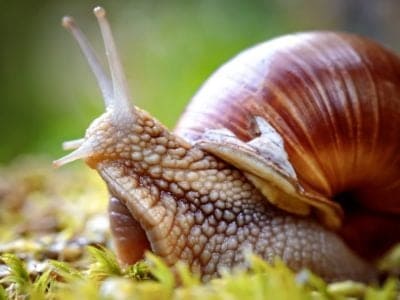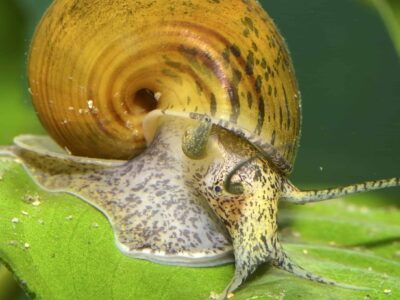A mollusk is an invertebrate with an unsegmented soft body that is often covered partially or entirely with a calcareous shell and belongs to the Mollusca phylum.
Mollusk Explained
Mollusks, also spelled molluscs, are diverse members of the Mollusca phylum, the second-largest phylum of invertebrates. The variations of mollusks make the definition of the term vague. These creatures have soft bodies along with an assortment of characteristics that may or may not be present in them.
For example, mollusks frequently have some form of a calcium-based shell that they use for protection. Snails have such a shell, but slugs do not. Furthermore, many of these animals can be found in marine environments, but some of them are found on land as well.
Mollusca contains about 85,000 extant species, so the members of this phylum have vast differences between them. Some of the smallest mollusks are gastropods called litiopids, and they measure about 1 mm across. However, the largest bivalve mollusks are giant clams, measuring about 4 feet long and weighing over 500 pounds.
Thousands of different types of mollusks exist throughout the world, and they come in many shapes and sizes. Thus, it’s hard to generalize the phylum.
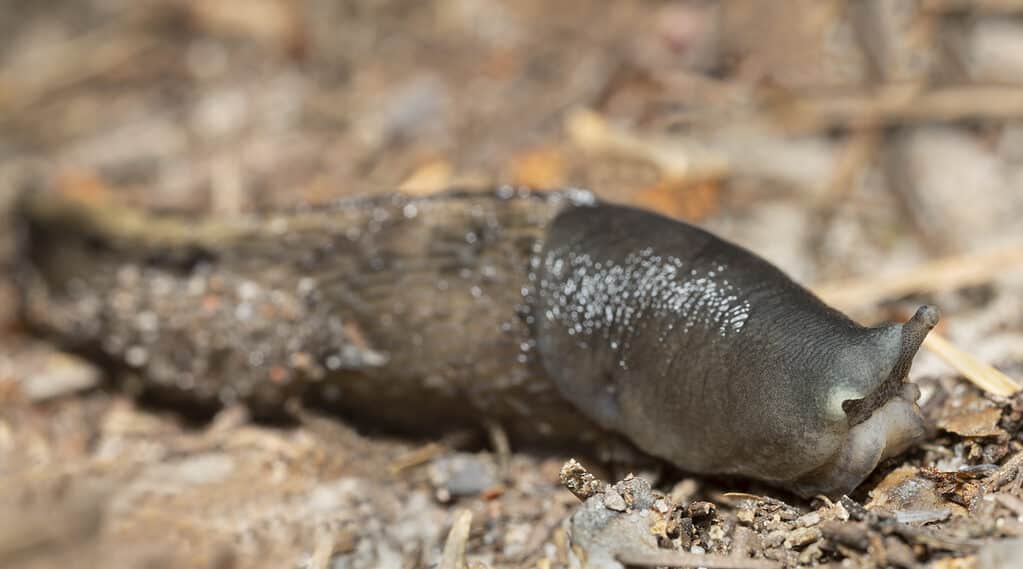
Limax cinereoniger is the largest slug.
©iStock.com/Henrik_L
What Are 10 Examples of Mollusks?
Several different types of mollusks exist throughout the world. The following examples illustrate the uniqueness of these beings. Ten mollusks are:
- Clams
- Snails
- Squids
- Oysters
- Cuttlefish
- Scallops
- Slug
- Cuttlefish
- Mussels
- Nautiluses
These general examples demonstrate some of the variety seen throughout the Mollusca phylum.

Squids are some of the largest mollusks.
©iStock.com/DiveIvanov
What Do Mollusks Eat?
Mollusks are not monolithic, so different members of the phylum eat a wide variety of different foods. As such, mollusks can be carnivores, herbivores, and omnivores.
Octopuses are carnivorous mollusks. These cephalopods typically consume snails, fish, crabs, and clams. They are very intelligent creatures that employ various methods to attack their prey. They might stalk and ambush prey or simply use their beaks to open bivalves.
A snail is an example of an omnivorous mollusk. These creatures are mostly herbivorous, eating fruits, vegetables, grains, and algae. However, they can consume worms and other snails in some situations. Some snails are completely herbivorous while others are primarily carnivorous, though.
Oysters are almost entirely herbivorous except for the fact that they consume zooplankton and dissolved organic matter.
Mollusks eat a lot of different foods throughout the various groups that make up the phylum.
How Do Mollusks Reproduce?
Mollusks use sexual reproduction to create offspring. However, reproduction can be different for various members of this phylum.
Some oysters begin their lives as males and then turn to females permanently after about a year. To reproduce, a male Olympia oyster will release sperm balls into the water. These sperm balls break down in the water and release the sperm in the water.
Females will gather the sperm using a type of respiration and then use the sperm to fertilize the eggs internally. After about 10 days, the larvae are released into the water. Those that survive become the next generation.
Generally, octopuses reproduce by going through a mating ritual until the female accepts the male. Then, the male uses a specialized harm called the hectocotylus to introduce sperm to the female’s mantle cavity, the location of her eggs. The female will lay a fertilized clutch of eggs in a den and watches over them until they hatch. This is not the case for every species of octopus, though.
Snails are a complex case. Some of them are hermaphroditic while others have a defined sex. In the case of the former, both snails can use a penis to enter their partner’s vagina and copulate. This transfers sperm to both and allows them to lay fertilized eggs.
In short, mollusks reproduce in a wide variety of ways that will vary between species. Their variable modes of reproduction demonstrate the extraordinary differences between the members of this phylum.
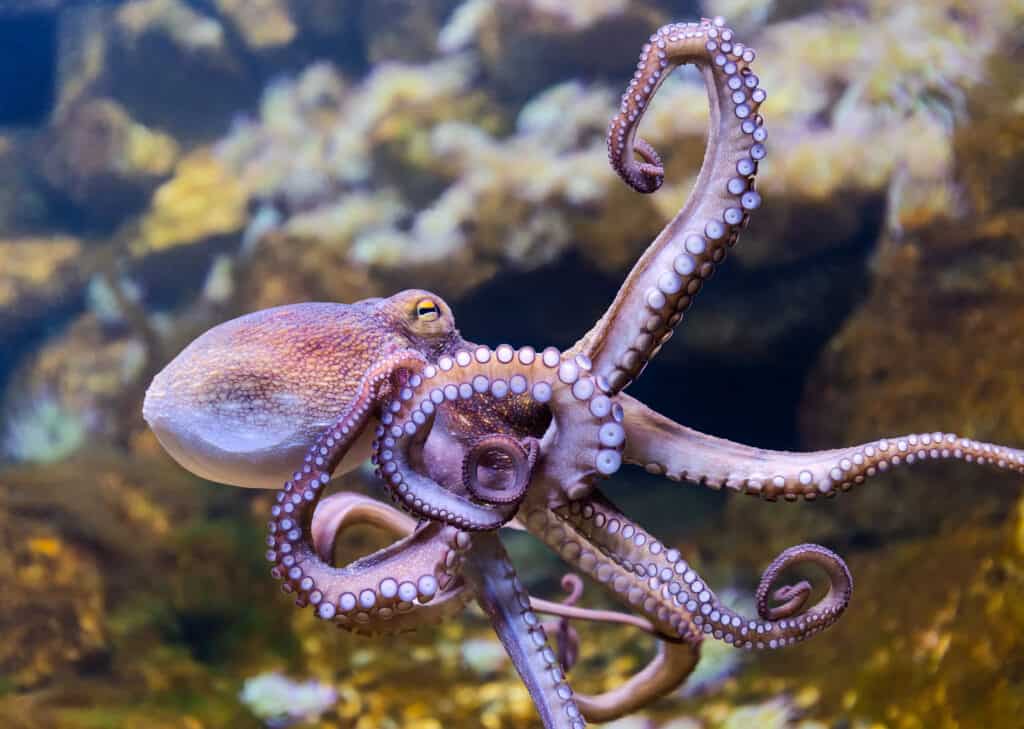
Octopuses are supported by a series of well-developed muscles that run along the length of their bodies.
©Henner Damke/Shutterstock.com
Human Interactions With the Phylum
Human interactions with mollusks can vary. For example, humans eat many kinds of mollusks, especially clams, mussels, and oysters. That means humans have a predator-prey relationship with some of them.
However, some mollusks are incredibly dangerous and even deadly to humans. The blue-ringed octopus is a mollusk with powerful venom that can kill a human. The creature’s neurotoxin, tetrodotoxin, can cause a host of symptoms like numbness, weakness, and nausea within 10 minutes following a bite.
Over a short amount of time, the symptoms can turn into paralysis, respiratory failure, and then death. Blue-ringed octopus bites are rare because they are not aggressive. These mollusks have only caused three known deaths. Still, it’s possible to get bitten and not even know it.
Other members of this phylum are pests. The zebra mussel is such a creature. These small, shelled creatures are known for infesting water intake areas around power plants. As a result, millions of dollars each year are spent to remove these creatures from these areas and others. Furthermore, zebra mussels are invasive creatures in many areas, including the Great Lakes region of the United States.
Like every other facet of members of the Mollusca phylum, the interactions that humans have with mollusks vary quite a bite between food, dangers, pests, and more.
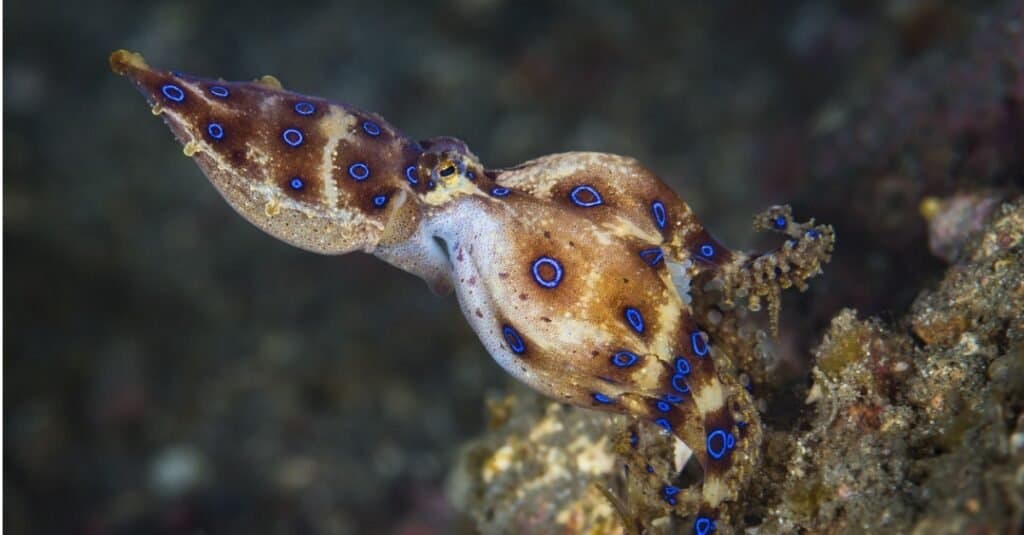
Blue-Ringed Octopus, (Hapalochlaena lunulata), 8 cm in size, female, carrying eggs.
©iStock.com/RibeirodosSantos
Mollusk Pronunciation
The pronunciation of the word is maa-luhsk.

